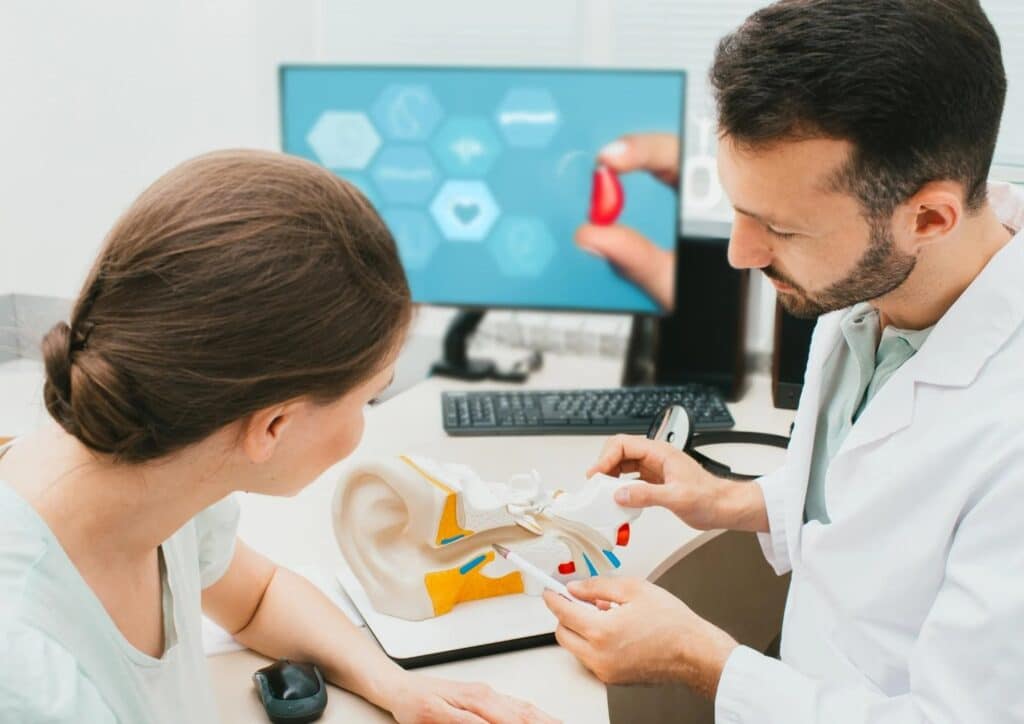There are a few ways in which the contentment of a patient might be affected by a medical website.
Infographics, videos, and articles are just some of the educational tools that may be made available to patients on a well-designed medical website.
As a result, patients may feel more in control of their healthcare and have a better overall experience.
An easily navigable and well-organized medical website can be a great resource for patients and directly support audiology marketing efforts. You can find the most pertinent features for an audiology website here: https://www.officite.com/audiology-marketing/
Provider information, services provided, insurance plans accepted, and appointment scheduling are all examples of what this category can cover. Patient satisfaction with their healthcare practitioner may rise if they have easy access to this data.
By providing a quick and easy means to make appointments, a medical website that does so online can boost patient satisfaction. Patients’ satisfaction with their healthcare provider has been shown to rise when they are given the option to arrange visits at times that are convenient for them.
By allowing patients to securely access their medical records, examine test results, and contact with their healthcare professionals, a medical website with a patient portal can increase patient satisfaction. Patients value the improved transparency and accessibility afforded them through patient portals.
By maintaining a constant and uniform experience regardless of the device used, a mobile-responsive medical website can boost patient satisfaction and increase the effective of an audiology marketing campaign. The ability to view information and make appointments on the go is highly valued by patients and can boost their opinion of their healthcare provider.
To increase patient happiness, medical websites should provide positive reviews and testimonials from other patients. Patients are likelier to feel satisfied with their care when their healthcare practitioner has a high rating and positive rating.
What Are Essential Website Features That Support Audiology Marketing?
Telemedicine
A medical website that offers telemedicine services can improve patient satisfaction by providing a convenient and accessible way for patients to receive care. Telemedicine allows patients to consult with healthcare providers remotely, which can be especially beneficial for patients who live in remote areas or have mobility issues.
Personalization
A medical website that offers personalized content and services can improve patient satisfaction by providing a more tailored experience. Personalization can include features such as custom health assessments, personalized treatment plans, and targeted educational resources.
Multilingual support
A medical website that offers multilingual support can improve patient satisfaction by providing access to healthcare information and resources in patients’ preferred languages. This can help to reduce language barriers and improve communication between healthcare providers and patients.
Social media integration
A medical website that integrates with social media platforms can improve patient satisfaction by providing a more engaging and interactive experience. Social media integration can include features such as patient forums, social media feeds, and social sharing buttons.
Online reviews and feedback
A medical website that allows patients to leave reviews and feedback can improve patient satisfaction by providing a way for patients to share their experiences and provide feedback to healthcare providers. This can help healthcare providers to identify areas for improvement and make changes to improve patient satisfaction.
Clear policies and procedures
A medical website that provides clear policies and procedures, such as appointment cancellation policies and billing procedures, can improve patient satisfaction by reducing confusion and providing clarity around expectations.
Visual design
A well-designed medical website can improve patient satisfaction by providing a visually appealing and professional-looking experience. Patients are more likely to trust a healthcare provider with a well-designed website, which can lead to increased satisfaction and confidence in the provider.
Responsiveness
A medical website that is responsive and loads quickly can improve patient satisfaction by providing a seamless and efficient experience. Patients appreciate websites that load quickly and are easy to navigate, which can lead to increased satisfaction with the healthcare provider.
Accessibility
A medical website that is accessible to patients with disabilities can improve patient satisfaction by providing an inclusive and equitable experience. Accessibility features can include options such as text-to-speech functionality, high-contrast modes, and keyboard navigation, which can help patients with visual or motor impairments to access healthcare information and services.
Privacy and security
A medical website that prioritizes patient privacy and security can improve patient satisfaction by providing a sense of trust and confidence in the healthcare provider. Patients appreciate websites that are secure and protect their personal information, which can lead to increased satisfaction and loyalty.
Community involvement
A medical website that demonstrates community involvement and social responsibility can improve patient satisfaction by showing that the healthcare provider cares about the health and well-being of their patients and the broader community. This can include features such as community outreach programs, charity events, and partnerships with local organizations.
Patient-centered website design
A medical website that is designed with the patient in mind can improve patient satisfaction by providing a user-friendly and intuitive experience. Patient-centered design involves understanding patients’ needs and preferences and designing the website accordingly, which can lead to increased satisfaction and engagement.
Integration with other healthcare technologies
A medical website that integrates with other healthcare technologies, such as electronic health records (EHRs), can improve patient satisfaction by providing a more seamless and coordinated experience. Integration with EHRs can allow patients to access their medical records and test results online, which can help to improve patient engagement and satisfaction with their healthcare.
Transparency
A medical website that is transparent about healthcare costs, insurance coverage, and other important information can improve patient satisfaction by reducing confusion and providing clarity around expectations. Patients appreciate transparency and honesty from their healthcare providers, which can lead to increased trust and satisfaction.
Personalized recommendations
A medical website that provides personalized recommendations for healthcare services and providers can improve patient satisfaction by providing a more tailored and relevant experience. Personalized recommendations can be based on factors such as the patient’s medical history, preferences, and location, and can help patients find the healthcare services and providers that best meet their needs.
User-generated content
A medical website that allows patients to contribute user-generated content, such as health-related articles or patient stories, can improve patient satisfaction by providing a sense of community and shared experiences. Patients appreciate the ability to connect with other patients and share their own experiences, which can lead to increased satisfaction and engagement with the healthcare provider.


 Home
Home









